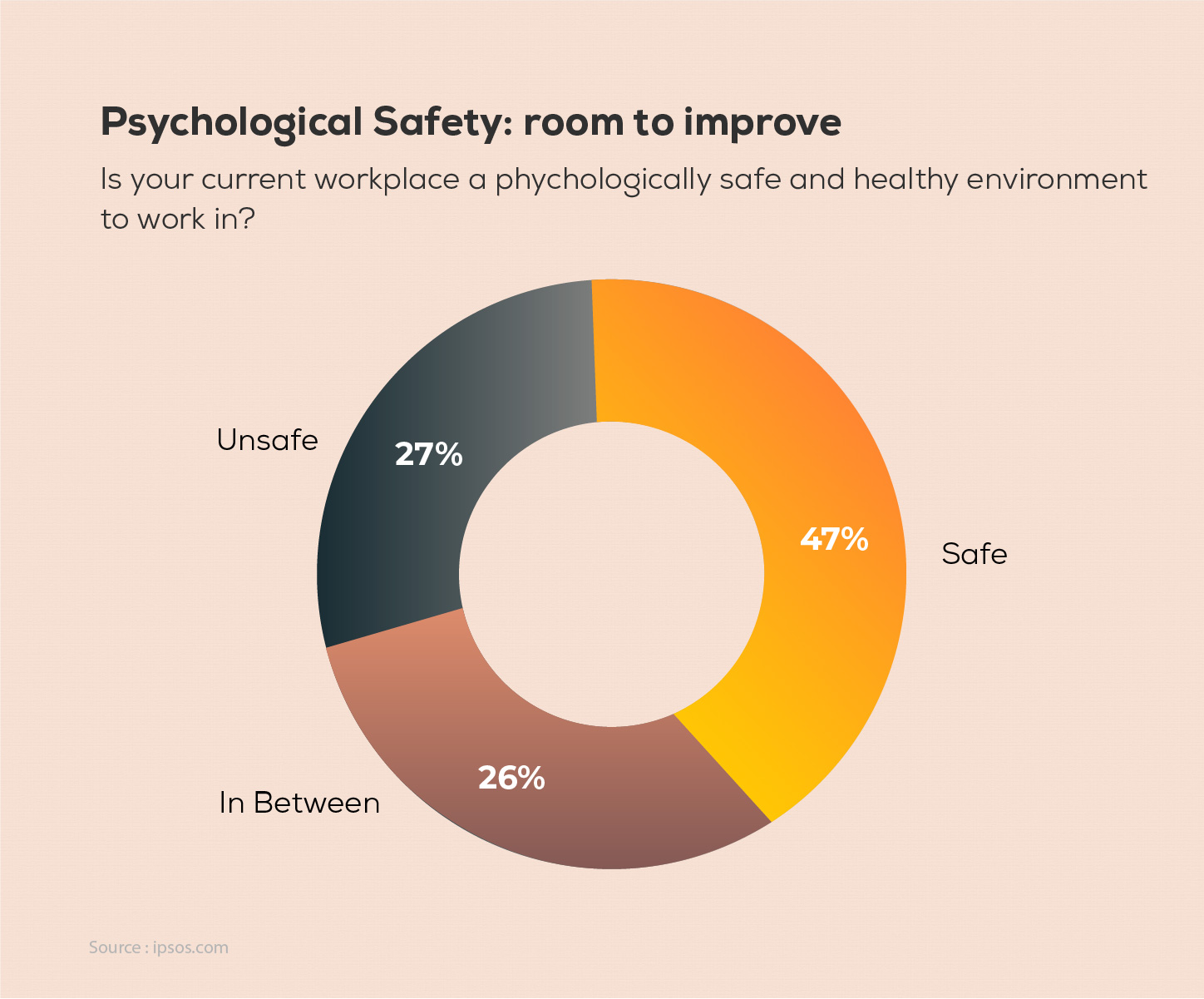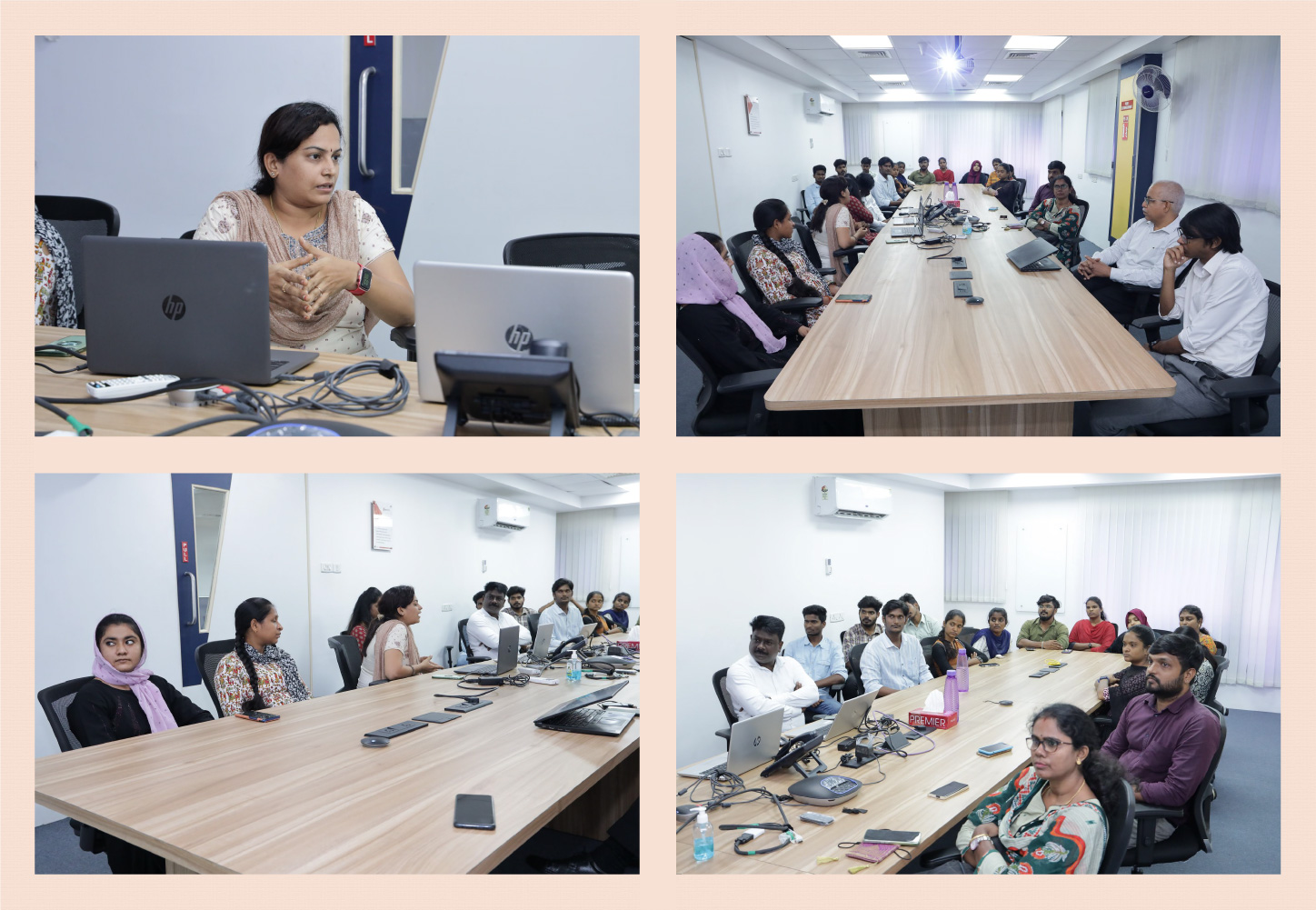In today’s rapidly changing world, mental health issues are becoming increasingly prevalent, making it more important than ever to focus on well-being at work. Psychological safety goes beyond just physical safety—it involves creating a sense of security from psychological harm and discrimination, cultivating an environment where trust and respect are the norm.

Since employees spend a significant portion of their time in the workplace, it greatly influences their overall well-being. Without proper management, this can lead to stress, anxiety, and even depression.
So, what does an unhealthy work environment look like?
A toxic or unsafe workplace can feel like a place where employees are stifled by their colleagues, supervisors, or a negative company culture. Surprisingly, a recent study revealed that nearly 70% of workers in Britain have found themselves trapped in such environments.
Take a closer look at the signs of a toxic work environment—are you experiencing any of them?
What is Psychological Safety?
The term ‘psychological safety’ was first coined by Harvard’s Amy Edmondson in a 1999 journal article, where she explored the relationship between team performance and the learning process. She defines it as:
Psychological safety means an absence of interpersonal fear. When psychological safety is present, people are able to speak up with work-relevant content.
In a nutshell, it’s the ability to share thoughts, ideas, or opinions freely, without fear or shame. Later, Simon Sinek, an English-American author, explored this concept further in his book “Leaders Eat Last,” emphasizing its importance in building a trusting workplace environment, nurturing innovation, and driving success.
Though psychological safety plays an important role, many employees still work in environments lacking a safe culture. A global survey conducted by Ipsos reveals that only 47% of employees feel in a safe environment.

Types of Psychological Safety
Timothy R Clare, the author of “The 4 Stages of Psychological Safety” emphasizes strategies for enhancing psychological safety at the team level. According to him, psychological safety significantly influences employee retention and well-being. The four stages include:
-
Inclusion Safety
Have you ever found yourself in a situation where you felt you couldn’t be yourself on a team? This stage addresses basic human needs by promoting connections within the team. The inclusion stage is about bringing your authentic self to work. Without inclusion safety, dominant voices overshadow others, making it difficult for individuals to feel like part of the team. So, how can you truly be yourself?
Embrace curiosity when you encounter someone with unique perspectives or habits. Phrases like "Tell me more about your interests," "I’m impressed by the way you...," "You are right," and "Say a little more" can elevate the excitement level in a conversation. Using such expressions helps create a more comfortable environment, encouraging others to open up and share their thoughts.
-
Learner Safety
Is your workplace one that values your input and encourages continuous learning? To thrive in an organization, it’s essential to stay updated. A safe workplace should inspire creativity and promote a sense of security, allowing individuals to express themselves freely. The true value of mistakes lies in the depth of learning they provide.
-
Contributor Safety
As the name suggests, contributor safety ensures that your contributions are valued. In this dynamic, contributors put in their efforts while organizations offer trust and support to achieve better results.
Encouraging team members’ contributions helps them feel appreciated.
-
Challenger Safety
The final stage of psychological safety offers an opportunity for open dialogue and growth. It empowers individuals to ask questions such as, "Why do we incorporate this?" "Can we try a different plan?" and "Would you be open to exploring options?"
True bravery lies in standing up for what’s right, and this quality should be encouraged. While it’s natural to feel embarrassed about making mistakes, it’s important not to let that diminish your courage.
Having explored the different types of psychological safety, let’s look at a compelling example that illustrates the impact of its absence: The 2003 Columbia space shuttle disaster. In this tragic event, the space shuttle disintegrated upon re-entry, resulting in the loss of all seven crew members. Harvard researcher Amy C. Edmondson discusses this incident in her book, “The Fearless Organization,” highlighting its significance in understanding challenger safety—a key aspect of psychological safety.
During the mission, NASA engineers were aware of potential issues with the shuttle’s foam insulation but hesitated to speak up due to a culture that discouraged dissent. This silence ultimately contributed to the disaster, as critical information went unreported.
In response, NASA launched the Safety Culture Program, aiming to create an environment where employees felt comfortable raising concerns without fear of retribution. This program underscores the importance of psychological safety in improving communication, decision-making, and overall safety.
Top Skills for Developing Psychological Safety in Teams
Investing in leadership development programs that focus on psychological safety can enhance employee well-being, retention and productivity. Here are the essential skills for establishing psychological safety within teams:
- Communication
- Empathy
- Accountability
- Self-reflection
- Conflict resolution
Creating Psychological Safety at Work
Investing in psychological safety encourages open communication, diverse perspectives, and a culture of trust, leading to better problem-solving and a more engaged, productive workforce. Here are some tips for building psychological safety in the workplace:
-
Create a Culture of Engagement

When employees feel that their thoughts and ideas are not valued, they may become disengaged and consider leaving. Engagement goes beyond just participating in meetings—it’s about being fully present and attentive. This means closing your laptop, making eye contact, and avoiding distractions like tapping pens, rustling papers, or sliding chairs, which can signal disinterest. True engagement involves active listening to understand different perspectives, ideas, and thoughts. Ask questions when appropriate, and allow a pause after someone finishes speaking before offering your own thoughts.
-
Connect with Your Team

Psychological safety is fostered when employees feel their thoughts and ideas are valued. Body language plays a crucial role in setting this tone. Effective listening means more than just nodding; it involves truly engaging with the speaker's thoughts and emotions. A genuine smile, positive body language, and good posture all contribute to creating a more engaging and supportive environment.
-
Building Trust

It’s easy to place blame when things go wrong, but maintaining psychological safety in the workplace requires a focus on solutions. Instead, ask questions like, “How can we solve this?”, “What steps can we take to prevent this issue in the future?”, or “What can we learn from these mistakes?”
“Together we can make a difference”
Using the word ‘we’ fosters a sense of shared responsibility and teamwork. It helps create a more positive and supportive environment where individuals feel comfortable seeking help and collaborating to improve.
-
Encourage Self-Awareness

Each individual brings their unique style, preferences, and qualities to work. Encourage team members to understand their working methods, communicate openly, ask questions without fear, and seek clarity when needed. High-performing teams often use behavioural assessments to help employees recognize their strengths, weaknesses, and preferred work styles, promoting better collaboration and self-awareness.
-
Provide Space for Feedback

Ensuring that employees feel valued means creating opportunities for them to share feedback. When psychological safety is present, employees feel secure in sharing their opinions without threat of reprisal. It’s important to understand the difference between anonymous and constructive feedback.
Anonymous feedback allows employees to share their honest opinions without revealing their identity, helping to gauge overall satisfaction. Constructive feedback, on the other hand, focuses on specific actions and provides suggestions for improvement, helping individuals and teams grow.
Benefits of Psychological Safety at the Workplace
Psychological safety has become a key focus in recent times. It fosters an environment where diverse perspectives are welcomed and encourages open problem-solving without fear. Here are some benefits of cultivating psychological safety in the workplace:
- Improved employee engagement
- Increased creativity
- Higher retention rate
- Framework for sustainability
- Job satisfaction
- Dedicated workforce
Wrap Up
In today's dynamic work environment, creating psychological safety is not just a trend—it is essential for building a resilient, innovative, and engaged workforce. When employees feel safe to express their ideas, share their concerns, and learn from mistakes, organizations can unlock their true potential. By prioritizing open communication, embracing diverse perspectives, and creating a culture of trust, companies can pave the way for continuous improvement and long-term success. As we move forward, let us remember that the strength of any organization lies in its people, and creating a safe space for them to thrive is the ultimate investment in growth and sustainability.








